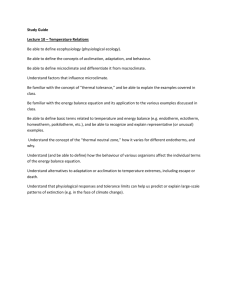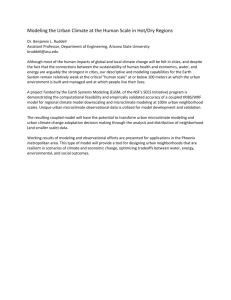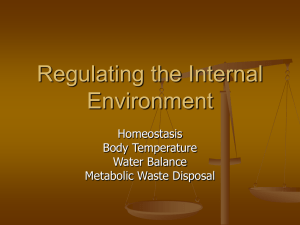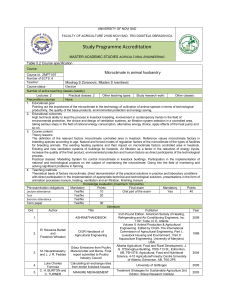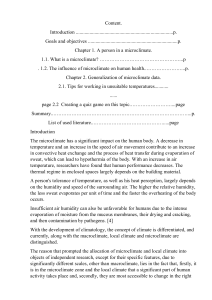Ch. 5 and 6 outline
advertisement
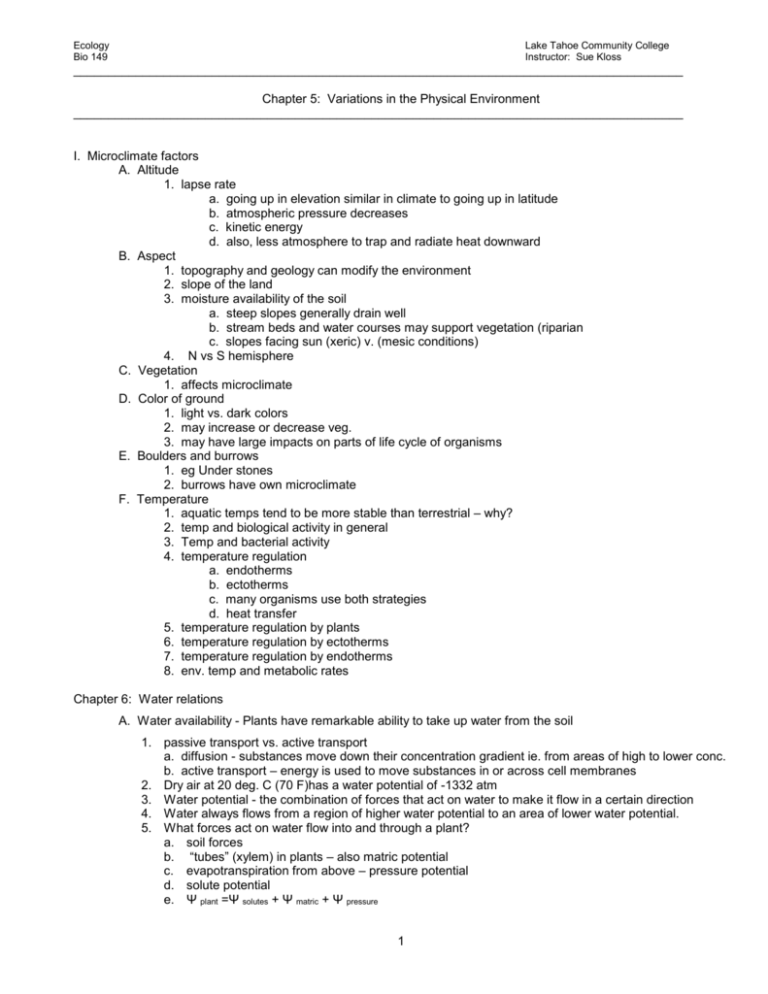
Ecology Bio 149 Lake Tahoe Community College Instructor: Sue Kloss ________________________________________________________________________________________ Chapter 5: Variations in the Physical Environment ________________________________________________________________________________________ I. Microclimate factors A. Altitude 1. lapse rate a. going up in elevation similar in climate to going up in latitude b. atmospheric pressure decreases c. kinetic energy d. also, less atmosphere to trap and radiate heat downward B. Aspect 1. topography and geology can modify the environment 2. slope of the land 3. moisture availability of the soil a. steep slopes generally drain well b. stream beds and water courses may support vegetation (riparian c. slopes facing sun (xeric) v. (mesic conditions) 4. N vs S hemisphere C. Vegetation 1. affects microclimate D. Color of ground 1. light vs. dark colors 2. may increase or decrease veg. 3. may have large impacts on parts of life cycle of organisms E. Boulders and burrows 1. eg Under stones 2. burrows have own microclimate F. Temperature 1. aquatic temps tend to be more stable than terrestrial – why? 2. temp and biological activity in general 3. Temp and bacterial activity 4. temperature regulation a. endotherms b. ectotherms c. many organisms use both strategies d. heat transfer 5. temperature regulation by plants 6. temperature regulation by ectotherms 7. temperature regulation by endotherms 8. env. temp and metabolic rates Chapter 6: Water relations A. Water availability - Plants have remarkable ability to take up water from the soil 1. passive transport vs. active transport a. diffusion - substances move down their concentration gradient ie. from areas of high to lower conc. b. active transport – energy is used to move substances in or across cell membranes 2. Dry air at 20 deg. C (70 F)has a water potential of -1332 atm 3. Water potential - the combination of forces that act on water to make it flow in a certain direction 4. Water always flows from a region of higher water potential to an area of lower water potential. 5. What forces act on water flow into and through a plant? a. soil forces b. “tubes” (xylem) in plants – also matric potential c. evapotranspiration from above – pressure potential d. solute potential e. Ψ plant =Ψ solutes + Ψ matric + Ψ pressure 1 6. tension - cohesion theory of water movement 7. How does water get out of the plant? 8. Light availability C. Salt and water balance go hand in hand 1. the osmotic potential of sea water 2. Freshwater fish gain water 3. water retention is critical in saltwater fish 4. in some hyper saline water bodies, no fish can live 5. other food webs 6. Water and salt balance in Terrestrial organisms 7. terrestrial animals take up most salt they need in food and water 8. eliminate excess salt in urine Lesson Objectives Ch. 5 and 6 1. Distinguish between microclimate and macroclimate, and describe the major factors that account for each. 2. Define and describe lapse rate. Why does altitude approximate high latitude? 3. Describe 4 ways that aspect affects microclimate. 4. Describe 3 other factors that affect microclimate and explain how they do so. 5. How does water affect temperatures, generally speaking, and why? Give specific examples. 6. How does temperature affect enzyme activity, and give an example of adaptation by acetylcholinesterase production in trout. 7. Differentiate between endotherms and exotherms, and then tell how they are similar. Give 4 methods of temperature regulation for each. 8. List and describe 4 methods of heat transfer. 9. Distinguish between active transport and diffusion. 10. How do substances diffuse? What physical forces regulate the flow of water, and how does it flow? 11. What forces act on water causing it to flow into and through a plant? What causes water to move into the crown of a tree against the force of gravity? 12. How does water get into and out of plants? Describe adaptations of plants for maintaining proper water content. 13. Describe the environmental challenges for freshwater fish; for saltwater fish. How do sharks compensate? 14. How can plants regulate salt contents of their bodies? How about animals.? 2
